The 8 Hour UX Challenge
Published on July 14, 2016 by Heather Wright Karlson
Start the day by digging into a topic such as wayfinding– and then just 8 hours later present your solutions!This is what we call an 8 hour UX challenge!
WHY 8 HOURS?
We take a close look at a specific topic (wayfinding for example) in an intense 8 hour period in order to welcome the creative process and encourage us to embrace ideas. This results in solutions that recombine what already exists, generates new solutions, and pushes us to solve with a spirit of openness. By condensing the time period teams are forced to make decisions and push ideas forward which results in fleshed out ideas and artifacts of solutions in just one business day.
We look to identify challenges in the physical environment and work to develop problem statements and present solution concepts, ideas, and prototypes by the end of the day. For this 8 hour UX challenge we used Bentley University as our canvas as we examined and imagined an evolution for wayfinding on campus.
WHAT DOES AN 8 HOUR UX CHALLENGE LOOK LIKE?
Ahead of the challenge, we broke down the overarching topic of wayfinding into six different themes so that groups already had a kick-start for exploring the topic.
Our themes included signage, maps, and physical accessibility.
Teams of 2-3 people were formed based on people’s interest in a particular theme. Each team was given the same guide for the day which included a schedule, the list of themes, and information and resources related to methods for exploring/collecting, ideating, creating, and iterating.
HOW DID WE BREAK UP THE 8 HOURS?
9:15-9:30- Welcome + groups formed
9:30-11:30am - Explore, Observe and Collect
11:30-12pm- Lunch
12-3pm- Ideate, Create, & Iterate
3-4pm- Group Presentations
4-5pm- Next Steps
MORNING
The first part of the day was focused on exploring and collecting information related to a group’s theme. Groups were instructed to gather information and work towards forming problem statements to be later addressed through design solutions. For example, the group looking at physical accessibility had the following question, “What improvements or adaptations have been made to campus properties in order to improve physical accessibility?”. Team members could be found walking around campus taking down notes and snapping photos. One of the teams travelled to a nearby campus for a comparison.
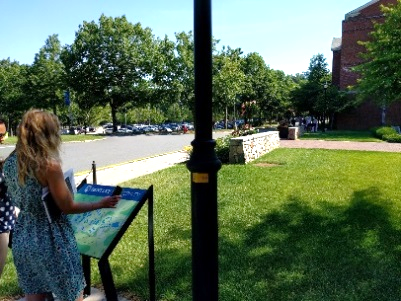
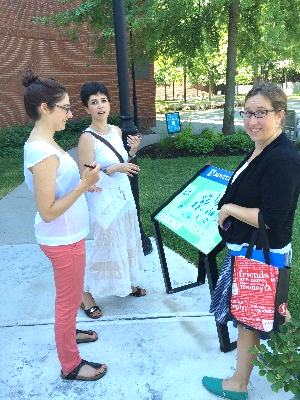
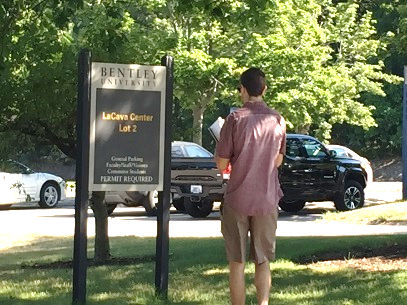
AFTERNOON
The second half of the day was dedicated to creating designs that addressed the problem statements. We iterated on the designs and, if time allowed, tested them in the wild in order to find an optimal solution.


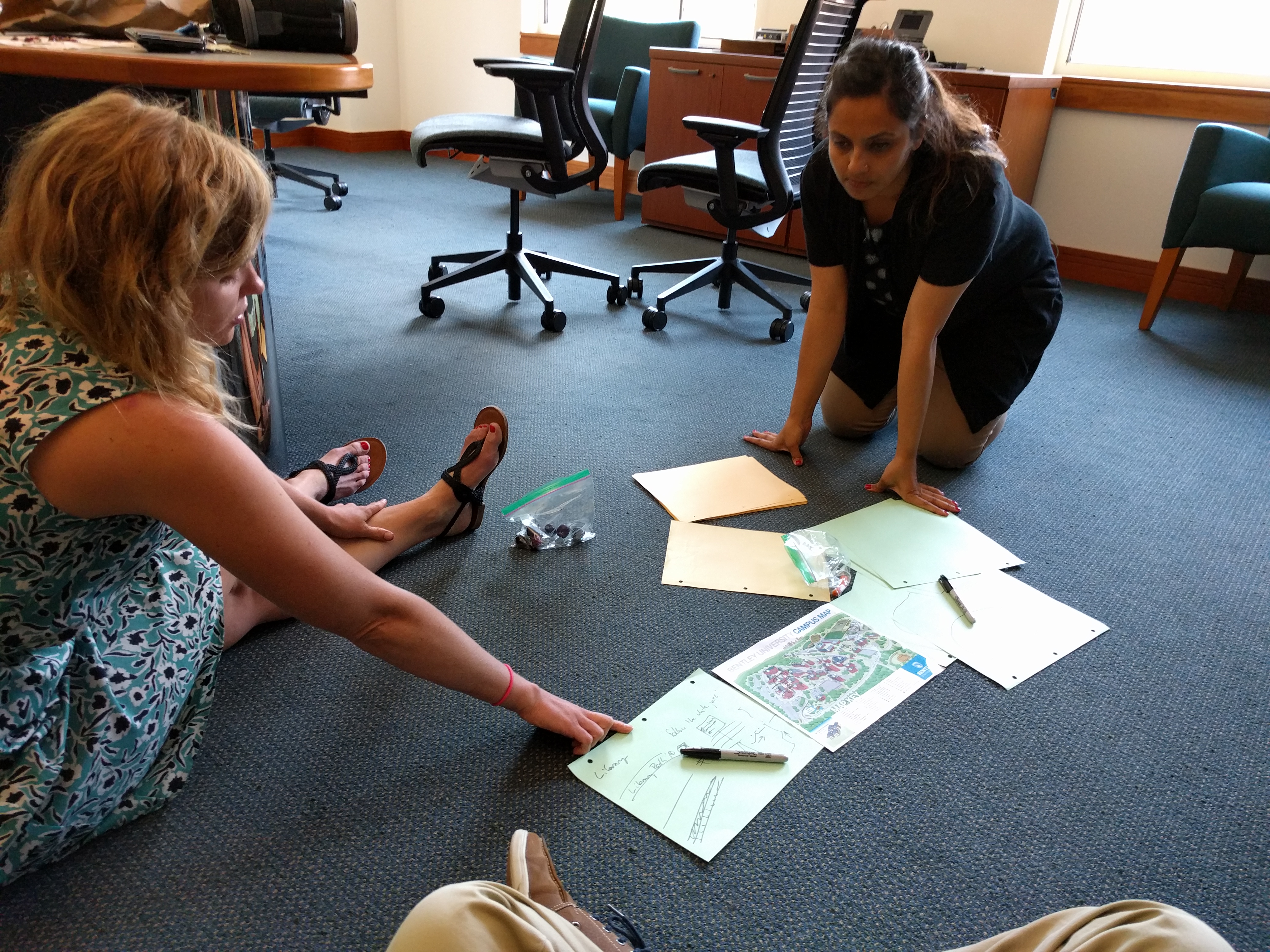
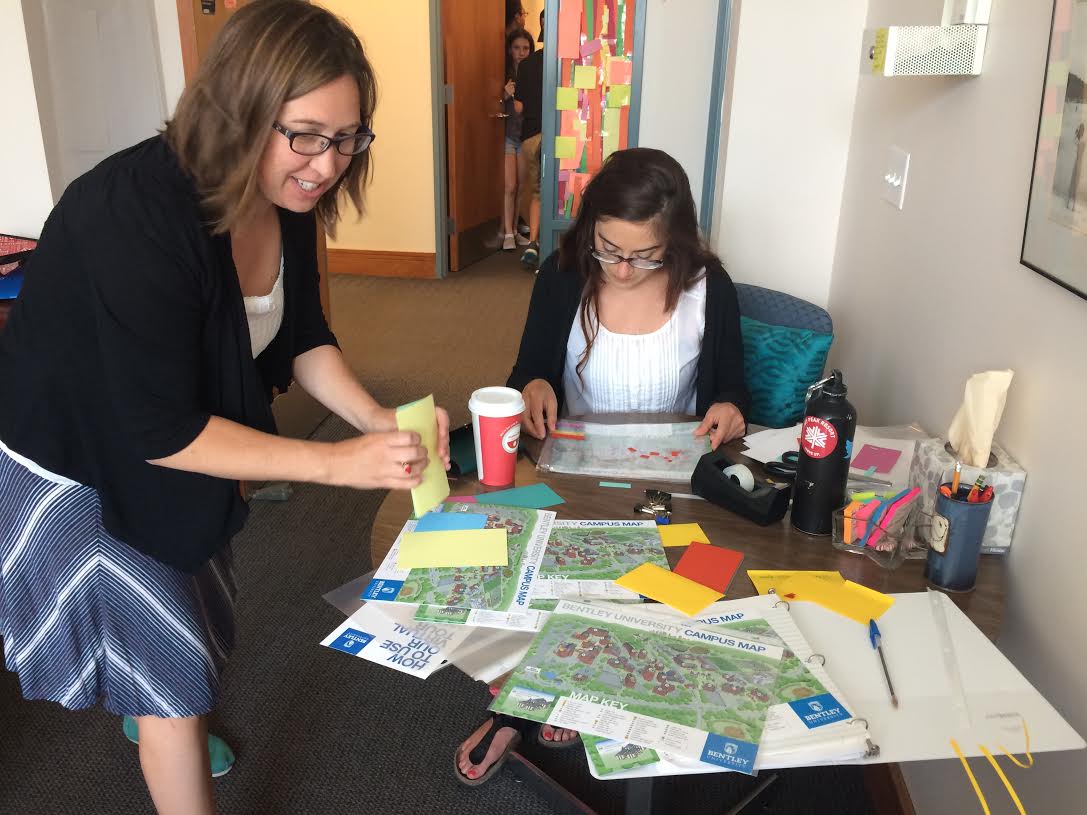
SOLUTIONS THAT WE CAME UP WITH:
At the end of the day, three teams had created rough artifacts that represented solutions to problems and challenges related to wayfinding. Each team generated more than one idea. Here are three of the solutions that we presented:
WAYFINDING THEME: PHYSICAL ACCESSIBILITY
CHALLENGE: Accessibility is widely available, but not obvious or well marked throughout campus.
SOLUTION: Mark the points and types of accessibility aids on the campus map
ARTIFACT: A prototype representing campus map allowing users to select and deselect filters for such accessibility aids as ramps, handicapped parking, automatic doors, and staircases clearly marked. For example, if someone wanted to see the ramps available along a particular route the map would indicate those.
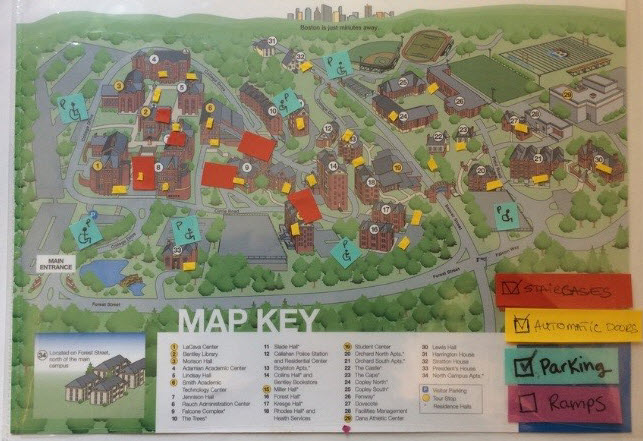
WAYFINDING THEME: MAPS
CHALLENGE: The maps around campus were present in some areas, however, either with or without a map, a user’s current location is unclear.
SOLUTION: Integrate wayfinding into the environment
ARTIFACT: A prototype of a wayfinding tool integrated into the environment which includes major landmarks and indicates their relative location. Upon arriving at the library, for example, the location of the user in relation to the library would be indicated on the ground.
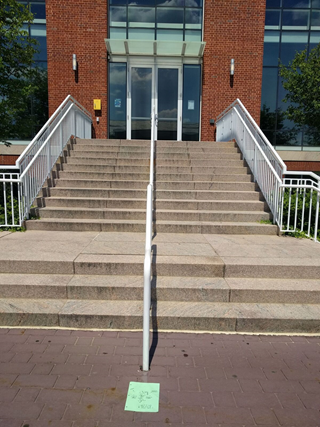
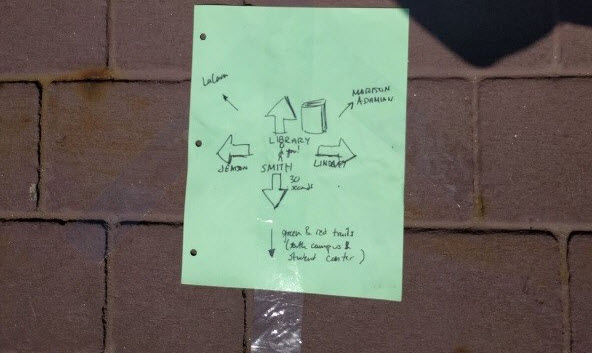
WAYFINDING THEME: SIGNAGE
CHALLENGE: Signage isn’t very distinct and doesn’t provide building directories giving visitors an understanding of key building functions.
SOLUTION: Color-coding of signage and maps.
ARTIFACT: A prototype suggesting color coding on building facades as well as maps and walkways to aid in wayfinding. Adding building directories listing the departments and centers housed within each building in addition to the building names.
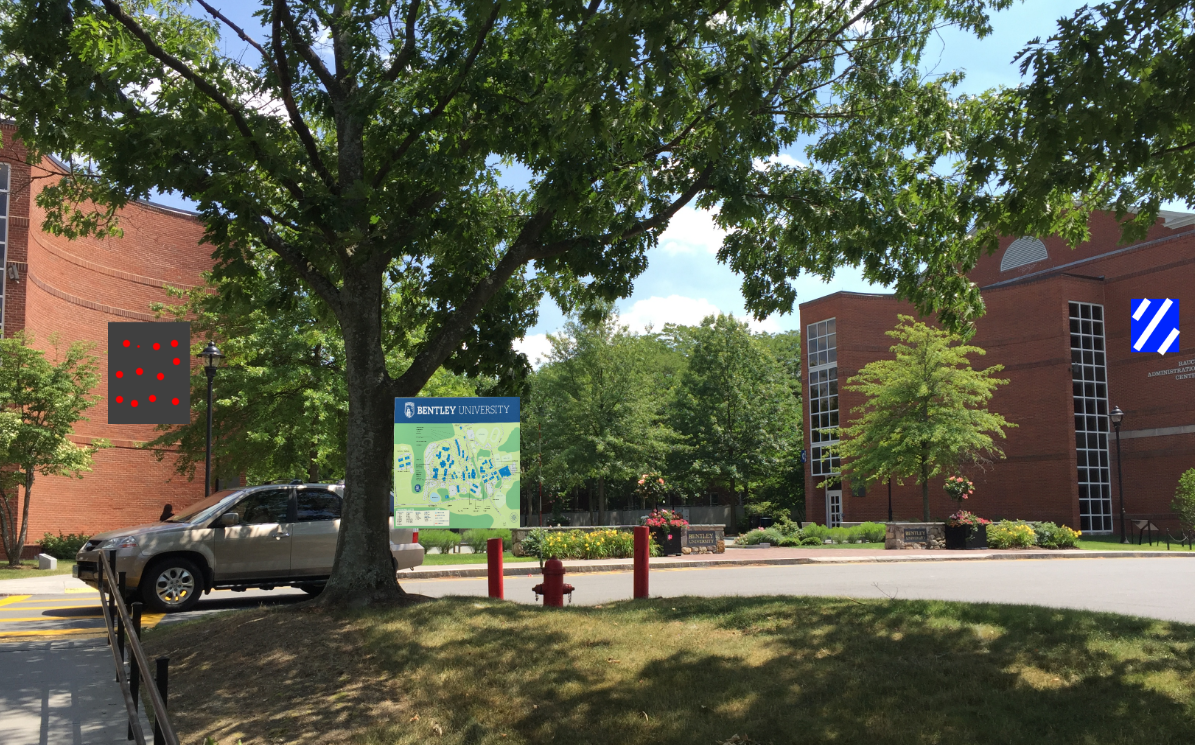
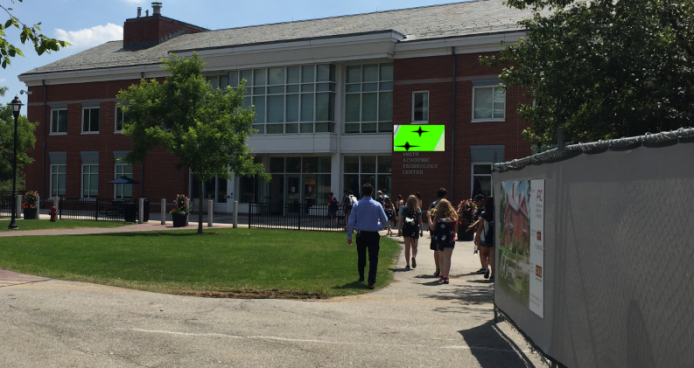
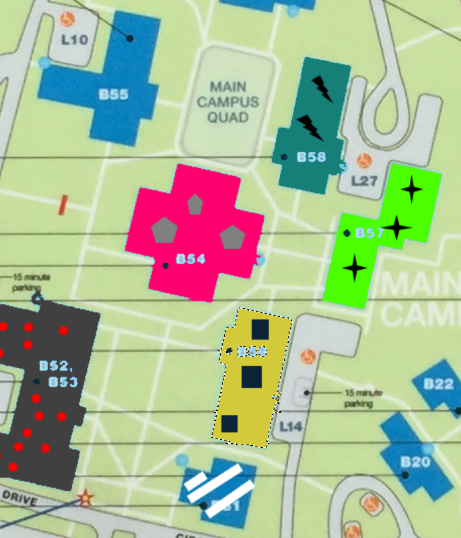
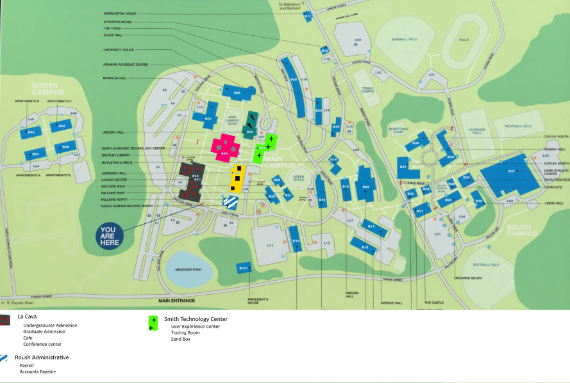
WHAT’S NEXT?
After each team presented their solutions and reflections on the process, everybody who participated in the challenge worked together as a group to identify solutions and ideas that we’d like to push forward to more polished deliverables.
As a follow-up, we sent out a questionnaire to everyone and asked each person to vote on what to move forward with. We also gathered feedback regarding the process and outcome from the day, so that future 8 hour UX challenges will continue to evolve. We’re working on pushing forward one of the ideas related to wayfinding and looking for places that these solutions could apply to such as other university campuses or communities that challenged with wayfinding.
HOW ABOUT YOU?
Do you have a challenge that you think could get some traction with a 8 hour UX Challenge? Let us know where 8 hours of UX could be put to good use- we'd be happy to work with you!
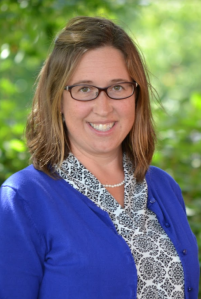
I'm Heather Wright Karlson and I'm a staff consultant at the User Experience Center (UXC) at Bentley . I am passionate about conducting a variety of formative and summative studies in order to improve interactions that people have with technology, services, and products. From interviews and wireframes, to ethnography, usability studies, and prototypes, I am keen to improve products and services across industries and understand that by looking at human behavior we can tease apart complex challenges and improve the experience. I hold a Master of Science in Human Factors in Information Design from Bentley University, a Master of Education in Curriculum and Instruction from the University of Massachusetts, and a Bachelor's of Arts in Individualized Study from the Gallatin School at New York University and am always interested in connecting. You can reach me at hwrightkarlson@bentley.edu or find me on twitter @uxheat or on linkedin
BACK TO ALL UXC BLOGS
Let's start a conversation
Get in touch to learn more about Bentley UX consulting services and how we can help your organization.


